for your consideration…
OPUS MAGNUM AREA AT INFINITY PROPOSALS
| PROPOSAL 0 "STATUS QUO" | PROPOSAL 2 "POLYMER BED" | PROPOSAL 3 "IGNORE CHAINS" | PROPOSAL 4 "IGNORE CHAINS NO AREA RESET" | PROPOSAL 5 "EVISCERATE LAST MONOMER" | |
|---|---|---|---|---|---|
| description | Don't ignore any area. Solves that tie on A' or A'' are truly tied. | As part of area computation for polymers, ignore area from atoms on hexes extending infinitely to the right of the polymer output. Area from mechanisms and arms is still counted. | As a tiebreaker, after reaching the steady state, reset area back to just the solution's glyphs and arms, then simulate one more steady-state loop, ignoring area from atoms that are part of a chain. Atoms become part of a chain when they are bonded for the last time to a molecule containing atoms that have escaped the solution and are moving off to infinity in the steady state. | As a tiebreaker, ignore area from atoms that are part of a chain. There are two ways for an atom to be part of a chain. The first is to have escaped the solution and be moving off to infinity when the steady state is reached. Atoms of this type are considered part of a chain once they move like they will in the steady state. To be precise, they become part of a chain after they move differently than they will in the steady state for the last time. The second way to be part of a chain is to become part of a molecule with atoms of the first type during the steady state. Atoms of this type become part of a chain when they are bonded for the last time to such a molecule. | As part of area computation for polymers, every time a polymer matches, flag the atoms in the last monomer (and any further unflagged monomers). Flagged atoms can't be output, and area from them is ignored. |
| pros and cons |
pros:
|
pros:
|
pros:
|
pros:
|
pros:
|
| ARMOR FILAMENT RA@∞ | 2A'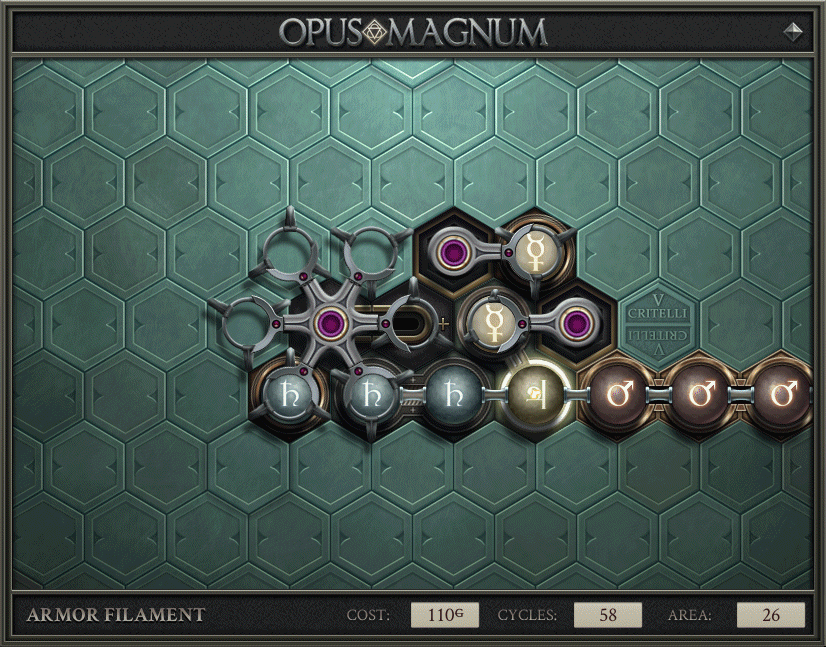 |
23A |
2A'/23α |
2A'/23α |
23A |
| ARMOR FILAMENT A@∞R | 2A' |
20A | 2A'/20α | 2A'/20α | 20A |
| SWORD ALLOY RA@∞ | 6A'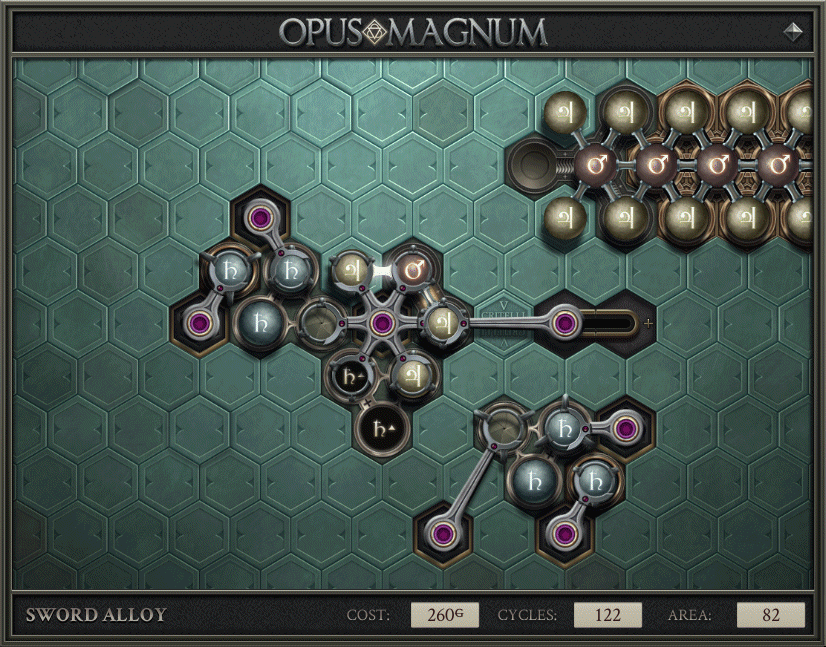 |
64A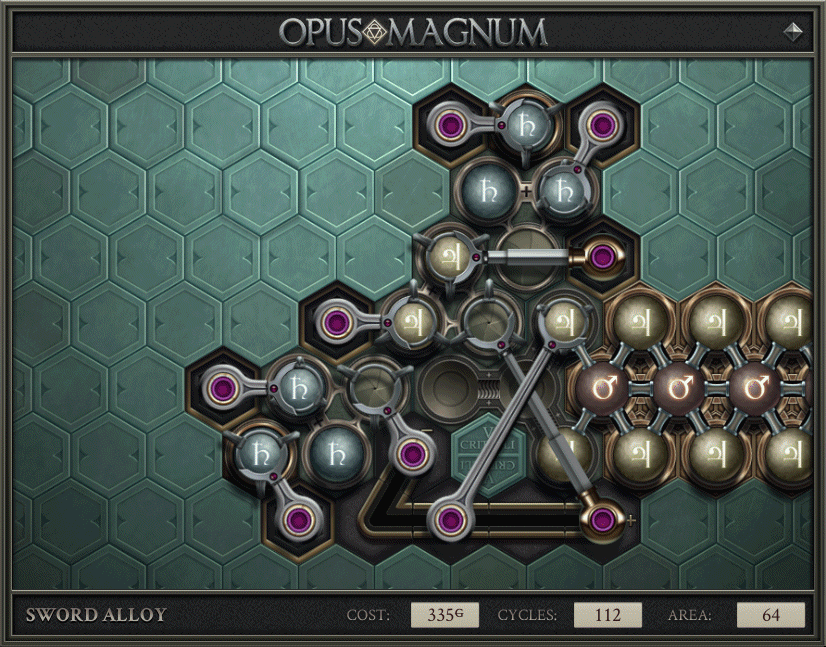 |
6A'/64α |
6A'/64α |
80A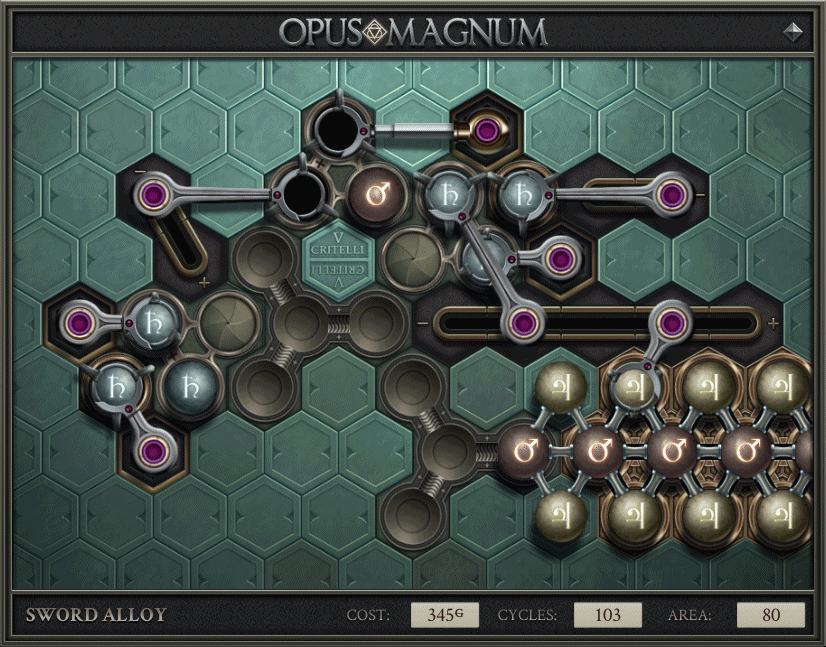 |
| SWORD ALLOY A@∞R | 6A' |
48A |
6A'/48α |
6A'/48α |
62A |
| ASSASSIN'S FILAMENT RA@∞ | 16A' |
4A' |
16A'/111α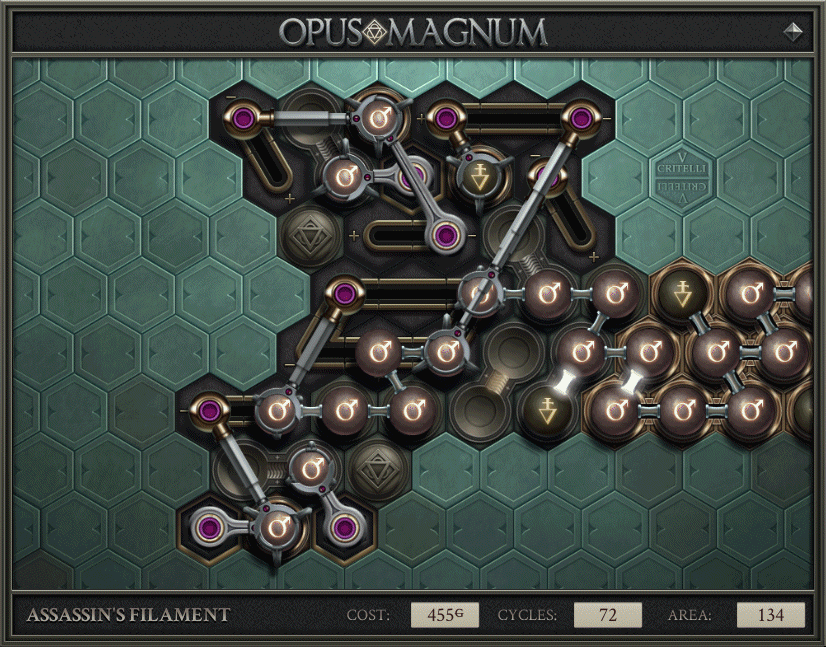 |
16A'/111α |
134A |
| LITHARGE SEPARATION RA@∞ | 0.333A' |
0.333A' |
0.333A'/71α |
0.333A'/71α |
0.333A' |
| RP0'S FUNNY DEMO SOLVE | 1A' |
23A |
1A'/22α |
1A'/23α |
23A |